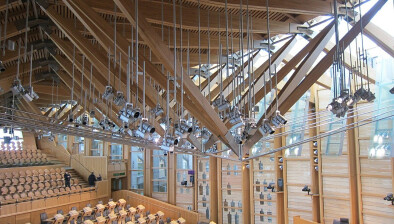Mortgage deals at two-year high

Bank of England figures have shown that mortgage deals are at a two-year high due to lower bank rates.
The figures have shown that approvals increased to 67,306 from 65,506 in June, the highest level since July 2017. They also indicated that mortgage lending rose by £4.6 billion, the biggest increase since March 2016.
Whilst these figures suggest that the market is stabilising following a fall in demand, analysts said that they were more a reflection of lenders competing for market share rather than a recovery in lending.
UK Finance figures also released this week indicated that an increase in approvals was being driven by remortgaging as homeowners sought more competitive rates. They also said that approvals for remortgaging increased by 19.4% to 30,218 on a seasonally adjusted basis last month and that approvals for home purchases increased by 16.4% at 43,342.
UK Finance figures only cover the main high street banks, whereas the Bank of England figures cover the whole mortgage market.
Hansen Lu, property economist at Capital Economics, said: “Today’s data confirm that the strong lending figures published by UK Finance reflected banks taking market share from each other, rather than a market-wide surge in activity.”
As competition between lenders has increased and banks have been fighting for a proportion of the remortgage market. The average five-year fixed rate has decreased from 3.08% to 2.79% since the Brexit vote, according to Moneyfacts. Analysts believe that rates could fall even further in the event of no-deal Brexit.
The property market has languished since the referendum in June 2016. There has been some increase in activity since March 2019, when a no-deal had been avoided, but analysts have said that the rise in lending would probably not be continued and uncertainty would increase.
Howard Archer, chief economic advisor to the EY ITEM Club, said: “A long-running theme of household lending data has been a degree of stability. And in several respects, July’s numbers stuck to this. Annual growth in net lending was unchanged from June’s 3.5% and in line with the 12-month average. Within the total, growth in net mortgage lending rose to 3.2% from 3.1%, close to the average since 2016.”
He added: “Granted, in level terms, net mortgage lending rose to £4.6bn, the strongest since March 2016. But with gross lending dropping between June and July, this rise reflected lower repayments. And although mortgage approvals for house purchase increased in July to 67,300, a two-year high, the number remained within the very narrow range seen over the past two years. Meanwhile, consumer credit was up 5.5% y/y, also unchanged from June and well down from the double-digit rates seen in 2016 and 2017.”
The annual rate of consumer credit, which includes credit cards, overdrafts and car finance, came in at 5.5 per cent in July, unchanged from June but significantly below the 10.9% peak in November 2016. The Bank of England said that consumers borrowed £900 million in July, in line with the previous 12-month average.
Mr Archer added: “With economic uncertainty elevated and sentiment depressed (GfK’s measure of consumer confidence fell in August to a seven-month low), a subdued appetite for borrowing among households seems likely to continue. That said, consumers’ spending power is being boosted by low inflation and pay growth running at a decade high. This leads us to think that consumer spending growth should remain a relative bright spot for the economy, and one more sustainable for not being built on rapid debt accumulation.”









